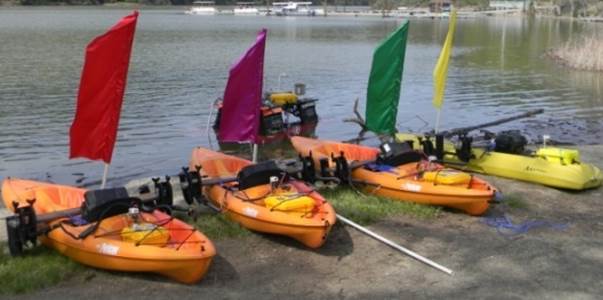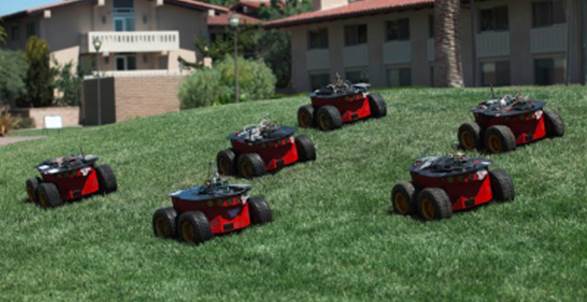
Are Two Robots Better Than One?
Christopher Kitts
Robots are good at performing tasks that require strength, speed, and precision. They’re also useful when jobs are dangerous or highly repetitive.
But if one robot is good, are two (or more) better? My students and I think that, for some applications, the answer is yes! For example, a group of robots can provide redundancy, increase throughput or automate tasks. A simple case of this is a traditional assembly line with robots sequentially contributing to the build of a system by installing parts, welding pieces, and painting assemblies. These robots “work together” in a very simple way. They typically perform their tasks individually with no true interaction and are externally synchronized in order to provide a collective capability. While this is a great application of a multi-robot system, we want more.

The Robotics Systems Lab performs cluster control research using a fleet of 6 autonomous kayaks.
Our vision is to develop groups of robots that continuously interact with each other to collectively provide an integrated capability. We’re even more interested when controlling the relative position of the robots with respect to each other enhances this integrated capability.
For example, consider two robots pushing a large object, one that is too heavy for a single robot to push. Collectively, the two robots have the strength to move the object. But how the object moves also depends on where the robots are relative to each other and to the object. By changing these locations, the robots can move the object in a straight line, rotate the object, or even follow a curved path.

The land based rovers being setup for adaptive sampling of a Radio Frequency field.
I have a group of very talented students who are helping dream up and implement new applications that can exploit our collaborative multi-robot control techniques. In addition to having robots move large objects, these students are experimenting with multi-robot systems that escort other vehicles, optimally track moving objects, relay messages between two moving points and perform distributed environmental sensing. One student is even combining these capabilities to have multiple groups of robots working with each other to perform complex missions. We’re experimentally applying these capabilities with groups of wheeled robots, boats, underwater robots and aerial drones; we’ve even been invited to demonstrate our techniques on a group of small satellites that fly inside the International Space Station. These are just a few of the interesting projects we're pursuing in the Robotic Systems Laboratory.

